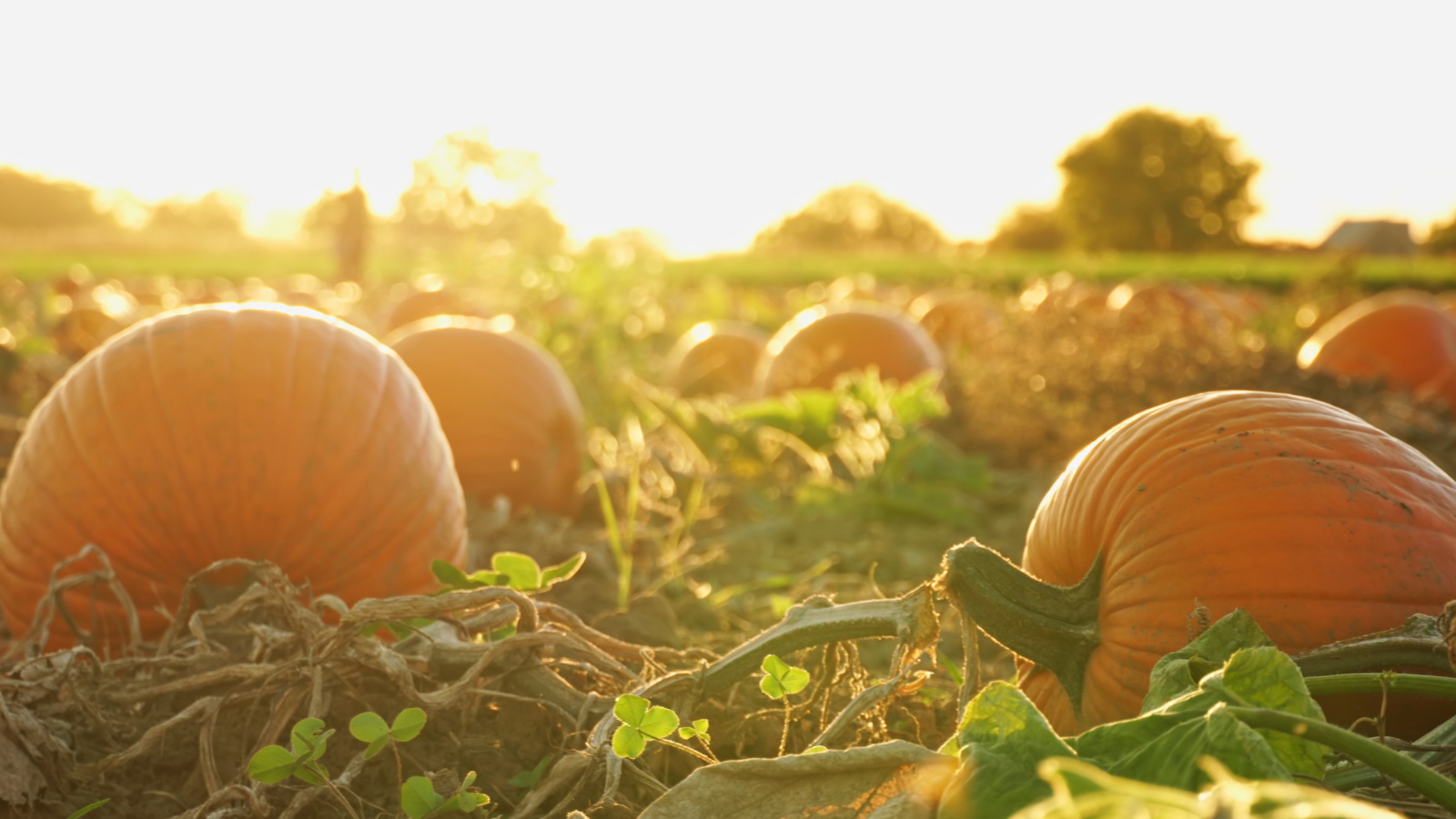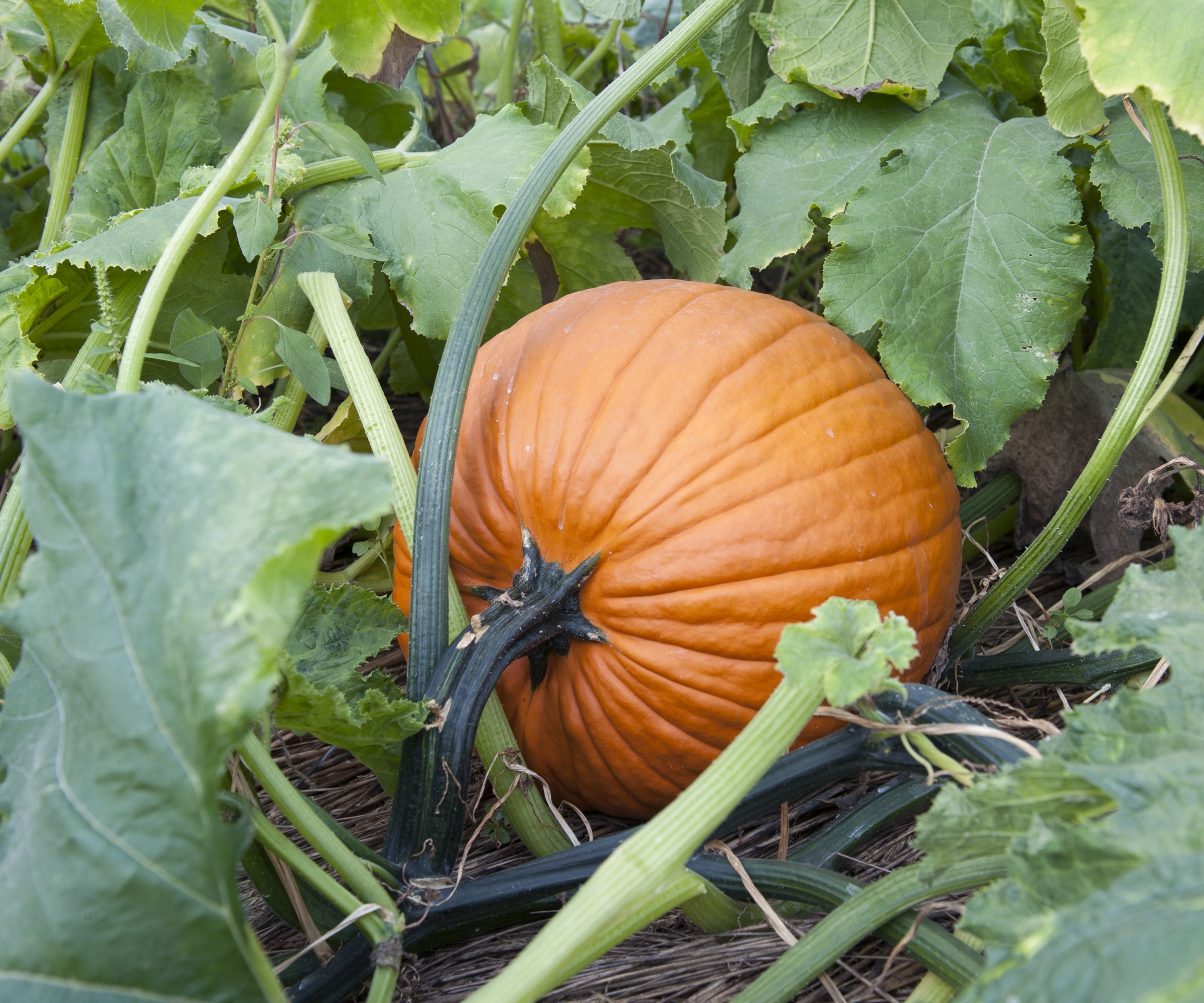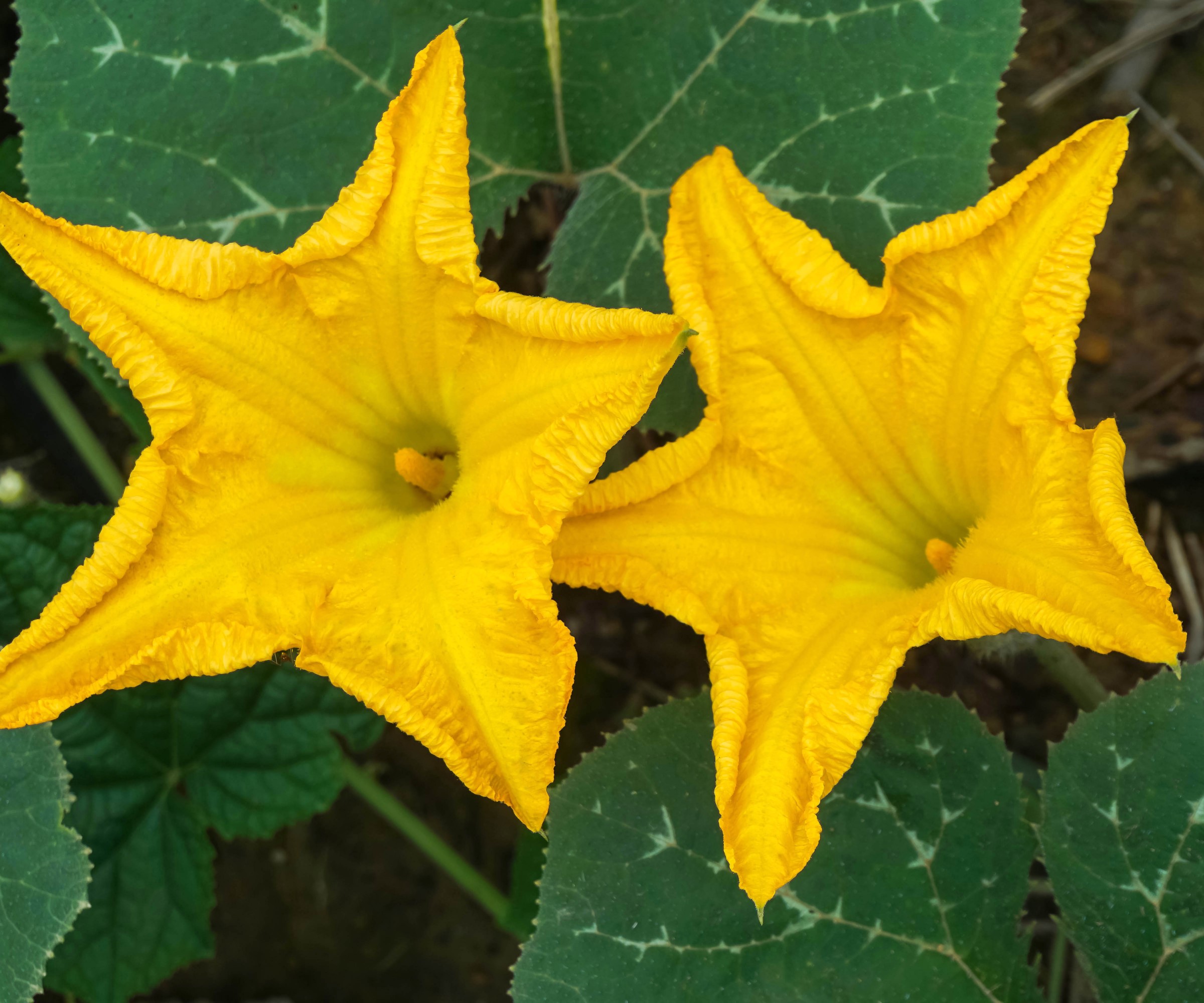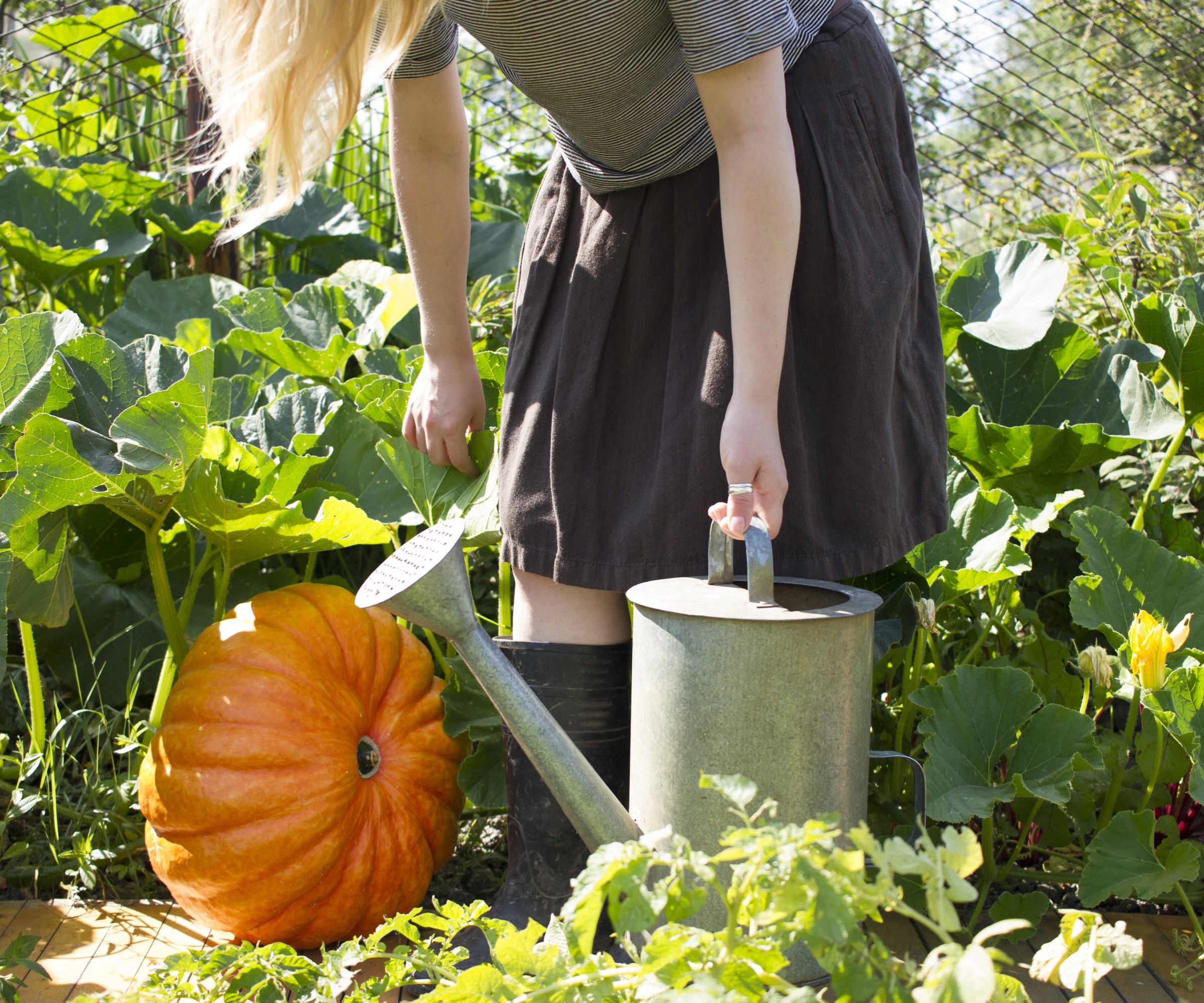
It's not surprising pumpkins need plenty of water and nutrients to grow as large and quickly as they do. Feeding plants has to happen regularly and a good regime can help guarantee bumper pumpkins for Halloween displays or culinary uses.
If you want to grow a giant pumpkin, knowing how to fertilize them can help you give the plants the right nutrients they need at the right time. From producing vines and foliage, to flowering, and to ripening fruit, the different phases of pumpkin growth have their own nutrient needs.
If you are new to growing pumpkins and just want to get a good fertilizing regime nailed down, or you are looking for tips to help your pumpkins to grow bigger, then we take a close look at when you should be fertilizing pumpkins and the best feeds to use.
Do pumpkins need to be fertilized?

Pumpkins are heavy-feeding plants that can take up a lot of space in a vegetable garden and do need lots of nutrients throughout their growing season. If you are planning a garden diary for the year, or looking to start a vegetable garden and want to grow pumpkins, then feeding is definitely a task to add to your to-do list for the summer.
There are lots of different fertilizers that can be given to pumpkins and it pays to understand the plant fertilizer numbers you will see on commercial product packaging. Such feeds have numbers that represent the make-up of nitrogen, phosphorus, and potassium in the form of NPK, for example it will show 5-5-5 or 10-10-10.
Nitrogen is responsible for strong growth of vines and leaves, phosphorus promotes flowering and fruiting, and potassium can help ensure healthy fruit. Pumpkins need each of these nutrients at different stages of the growing season and that dictates what fertilizer to use. Pumpkins will thrive by being given the right fertilizer at the most optimal time.
When should I start feeding my pumpkin plants?

You should start fertilizing right from the time you plant pumpkins to give your plants the best start to life in their final growing position. There is no need to fertilize seedlings, but be prepared to start providing plants with nutrients before planting by boosting the fertility of their growing space.
Lindsey Chastain, homesteader and founder of The Waddle and Cluck, advises working some compost or balanced fertilizer into the soil ahead of planting time in late spring or early summer. Not improving the soil is a vegetable garden mistake to avoid, as your plants will not prosper as much as they will in fertile soil.
She says: ‘This provides nutrients for establishing strong vines and roots early on. Once vines start rapidly growing, you'll want to side dress with a nitrogen-heavy fertilizer like ammonium nitrate every two to three weeks through July. Nitrogen stimulates lush vegetative growth.'
Once the plants start to flower, you switch to a more phosphorus-heavy fertilizer as too much nitrogen at this stage can promote excessive vine growth rather than fruits. And when fruits start to form, use a high-potassium fertilizer every two weeks.
Ashleigh Smith, from True Leaf Market, advises that regular additions of nutrients throughout the plant’s development stages will help to encourage ‘steady, constant growth’.
She adds: ‘The best frequency depends upon the type of soil you are growing in and the demands of the type of pumpkins being grown. Giant pumpkins will require much more nutrients than the classic carving pumpkin will.’
What is the best fertilizer for pumpkins?

Ashleigh advises that any pumpkin growers conduct a soil test to understand the existing nutrient levels in the soil, like with this soil test kit from Amazon. This will also show the soil pH as well as highlight any nutrient deficiencies or high levels from a previous year. The results may require adjustments to any feeding regime and she warns that ‘adding too much of a nutrient may lead to stunted and unhealthy growth’.
Always apply any fertilizer at the recommended rates from the manufacturer. Adding too much fertilizer can damage plants and can cause pumpkins to have yellow leaves, lose foliage, or have stunted growth as the roots are damaged by too much nutrients in the soil.
Compost and manure are two of the best fertilizers for a vegetable garden. Adding them at the time of planting provides a balanced mix of essential nutrients that are released slowly to the plants. Any manure needs to be well-rotted - fresh manure must be added the previous fall - as using fresh manure straight on plants is capable of burning their roots and killing them.
Lindsey recommends at this early stage: ‘Use organic options like compost, worm castings, or compost tea as a gentle nutrient source for best results. An all-purpose vegetable fertilizer with balanced NPK ratios also works well.’ Worm castings are available from True Leaf Market.
Once the vines are growing strongly, then start adding a nitrogen-heavy fertilizer such as blood meal or feather meal. These products tend to come in granular form and are applied around the plants and watered into the soil. You can get natural organic blood meal from Amazon.
Ashleigh Smith advises: ‘Keep in mind the nitrogen demands of pumpkins are quite high. You will want to look for nitrogen values around 10 to 20 on the fertilizer.’
At the flowering stage, switching to a phosphorus-heavy fertilizer such as bone meal or ammonium phosphate helps to add phosphorus to the soil and promote the formation of both flowers and fruit. You can also get natural organic bone meal from Amazon.
This is followed by a feed rich in potassium to develop the fruits, and the best options are typically fertilizers designed for use when growing tomatoes. Such a tomato feed is a liquid fertilizer that is mixed with water and added when you water plants - like this tomato fertilizer from Amazon. Alternatively, try making your own tomato fertilizer with compost, nettle tea and more.
Shop pumpkin fertilizer online
This nutrient-rich 5-1-5 concentrate fertilizer blend ensures robust vine growth, strong root systems and bountiful harvests of pumpkins.
This fertilizer is has a high nitrogen content for vigorous growth of foliage, aiding growth of healthy pumpkins.
This is an acidic foliar fertilizer that feed through roots and leaves which contains a blend of plant growth stimulants and other nutrients to improve vegetable yields.
FAQs
Are coffee grounds a good fertilizer for pumpkins?
There are benefits to using coffee grounds on plants and one of those includes using them as a fertilizer. Coffee grounds can add extra nitrogen to the soil so are useful as a supplemental feed when the vines are actively growing. Coffee grounds can either be sprinkled directly around the plants or diluted with water and added as a liquid feed. As well as being able to give pumpkins a nitrogen boost, coffee grounds also keep bugs away and can be used as a control method for slugs and snails.
As well as needing lots of fertilizer to grow, it may surprise many to hear that it is possible to actually use leftover pumpkins as a fertilizer in your garden. While pumpkins can be used to make compost, they can also be broken up and buried around the garden to break down in the soil and release nutrients and vitamins to nearby plants. You will need to remove any seeds, otherwise you may have lots of pumpkins growing in that spot the following year.







